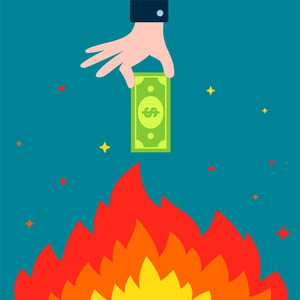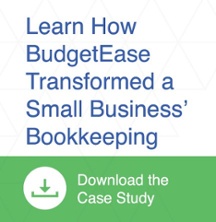 The current economic environment has been challenging for all business, particularly small business. To that end, it’s important to know your Burn Rate and adjust spending accordingly.
The current economic environment has been challenging for all business, particularly small business. To that end, it’s important to know your Burn Rate and adjust spending accordingly.
What is a Burn Rate?
A Burn Rate measures how quickly your cash holdings are decreasing. Burn Rates are measured two ways - Gross Burn Rate and Net Burn Rate.
Gross Burn Rate is a measure of the total amount you are spending. The calculation is straight forward:
Gross Burn Rate = Salaries + COGS + Overhead + Depreciation + Amortization + Other operating expenses + Interest and Taxes
Not considered in this calculation is revenue.
Net Burn Rate is the most common metric. In simple terms, Net Burn Rate is equal to your Net Income on the P&L statement. To calculate it from scratch, add all expenses for the month and subtract all income for the month.
Net Burn Rate = All Monthly Expenses - All Monthly Income
For example, if you’ve spent $100k this month, and brought in $50k in cash income, your monthly burn rate is $50k. Note that cash income needs to actually be in your hand – not deferred revenue from future sales.
A simple Burn Rate calculator can be found here.
Burn Rate Management
With your burn rate calculated, you know how many months you can sustain operations without going broke using existing spending. Perhaps you had several months of great sales and in turn increased your expenses. Maybe you leased a larger space or hired more professionals. Then, as quickly as sales increased, they declined. Now what?
This is the time when you take a deep dive into what you're spending and take measures to reduce costs. Common areas to reduce costs are:
- Office Space - Can you renegotiate your lease to reduce your space? Is a partial virtual work environment possible?
- Travel – Virtual meetings are not always ideal when it comes to client meetings; however, moving toward less in-person visits will save a lot of money in travel expense.
- Job Sharing – Implementing job sharing can significantly reduce your expenses and ultimately your burn rate.
- Outsourcing – Are there functions that are better - and cheaper - to outsource? Commonly outsourced positions are bookkeeping, IT, and Human Resources.
Managing your Burn Rate is not just about cutting costs. It’s equally important to look at what is working with your business and what isn’t.
Focus on Core Competencies – Make sure you are doing what you do best, as that is what will drive growth and ultimately revenues. Don’t dilute your strengths with goods or services that aren’t profitable.
Payroll – Your people are your greatest asset, hire the best. Always take quality over quantity.
Frequency – Calculating your burn rate is not a one-time task. In fact, you should be monitoring your burn rate frequently to see what is, and what is not, working.
Visit us at www.budgetease.biz to see how we can help calculate your burn rate and keep your business profitable.






